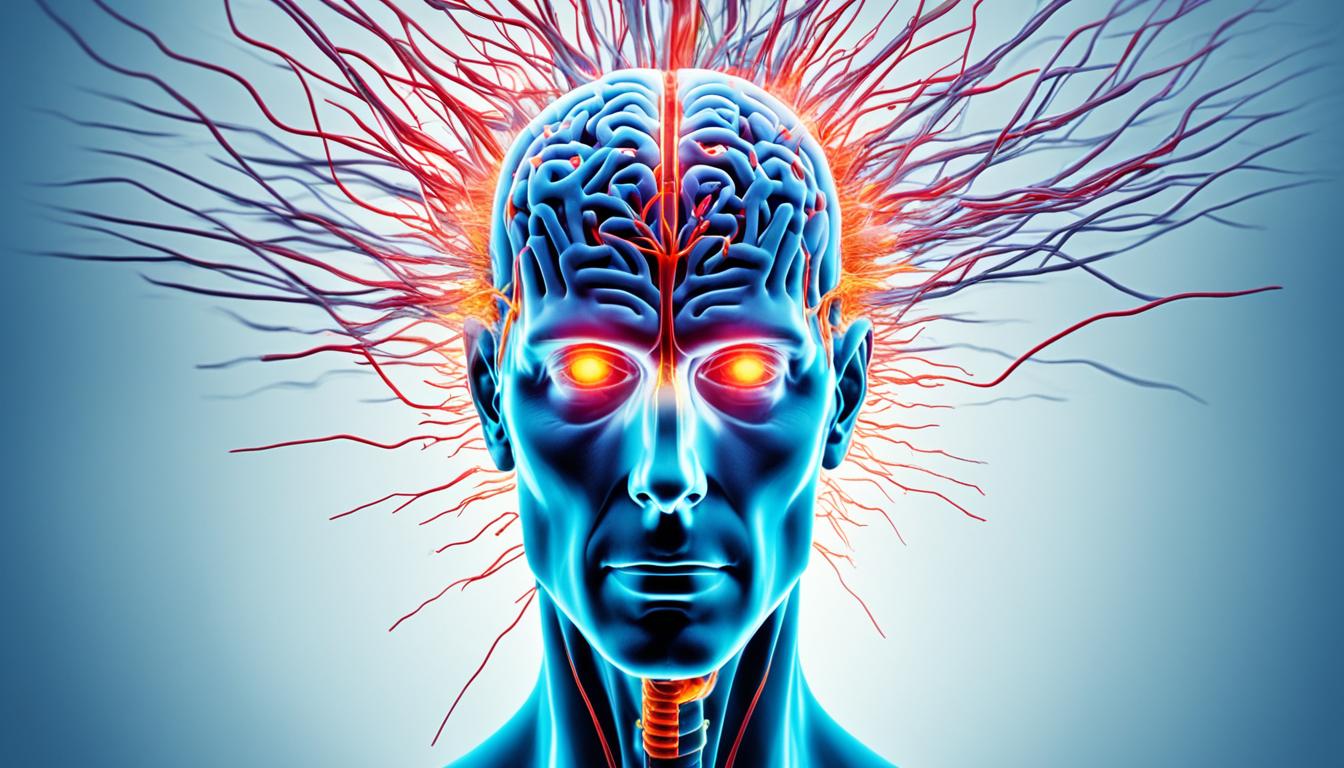Disclosure: This Post Contains Affiliate Links; We earn a commission on purchases.
Electromagnetic Hypersensitivity (EHS) is a condition characterized by a variety of non-specific symptoms that individuals attribute to exposure to electromagnetic fields (EMFs). Common symptoms reported include dermatological symptoms (redness, tingling, and burning sensations), neurasthenic and vegetative symptoms (fatigue, concentration difficulties, dizziness, heart palpitations), and digestive disturbances. These symptoms are not part of any recognized syndrome and can vary widely in severity. The prevalence of EHS in the general population is estimated to be low, with approximately 10% of reported cases considered severe. Studies on EHS individuals suggest that symptoms may be unrelated to EMF exposure and could be influenced by other environmental factors or pre-existing psychiatric conditions.
Key Takeaways:
- Electromagnetic Hypersensitivity (EHS) is characterized by non-specific symptoms attributed to electromagnetic field exposure.
- Common symptoms include dermatological, neurasthenic, vegetative, and digestive disturbances.
- EHS symptoms are not part of any recognized syndrome and can vary in severity.
- The prevalence of EHS in the general population is estimated to be low.
- Studies suggest that symptoms may be unrelated to EMF exposure and influenced by other factors or pre-existing psychiatric conditions.
What is Electromagnetic Hypersensitivity (EHS) and its Prevalence?
Electromagnetic Hypersensitivity (EHS) is a condition where individuals experience a range of non-specific symptoms attributed to exposure to electromagnetic fields (EMFs). These symptoms can include headaches, fatigue, dizziness, and skin issues. However, the prevalence of EHS is subject to wide variations in estimates.
While survey data from occupational medical centers suggest a low prevalence, with only a few individuals per million in the population, self-help groups report much higher estimates. Geographical variability in prevalence has also been observed, with higher rates reported in Scandinavian countries compared to the United Kingdom, Austria, and France.
It is important to note that symptoms similar to those reported by individuals with EHS are common in the general population. Therefore, it is crucial to consider multiple factors when evaluating the relationship between EMF exposure and the reported symptoms of EHS.
Main Points:
- Electromagnetic Hypersensitivity (EHS) is characterized by non-specific symptoms attributed to exposure to EMFs.
- Prevalence estimates of EHS vary widely, with low prevalence reported by occupational medical centers and higher estimates from self-help groups.
- Geographical variability in EHS prevalence has been observed, with higher rates in Scandinavian countries compared to other regions.
- Similar symptoms to EHS are common in the general population, emphasizing the need for comprehensive evaluation when considering the impact of EMF exposure.
Studies on EHS Individuals
Several studies have been conducted to investigate the claims of individuals with Electromagnetic Hypersensitivity (EHS). These studies aimed to assess whether exposure to electromagnetic fields (EMFs) similar to those attributed to their symptoms could be detected and correlated with their reported symptoms.
The majority of these studies indicate that individuals with EHS are unable to detect EMF exposure any more accurately than non-EHS individuals. In double-blind studies where neither the participants nor the researchers knew whether EMFs were present or not, the reported symptoms of EHS individuals were not found to be correlated with actual EMF exposure.
These findings suggest that factors other than EMF exposure may contribute to the reported symptoms of EHS. For example, environmental factors unrelated to EMF, such as flickering lights or poor ergonomic design, may play a role in the experience of symptoms. Additionally, there is evidence suggesting that psychological factors and pre-existing psychiatric conditions may influence the perception and interpretation of symptoms among EHS individuals.
To summarize, studies on EHS individuals have consistently shown that the reported symptoms are not directly linked to EMF exposure. Further research is needed to explore the underlying factors contributing to the experience of EHS symptoms and to better understand the role of psychological and environmental influences.
Controversies and Nocebo Effect
The existence of Electromagnetic Hypersensitivity (EHS) as a medical condition is surrounded by controversies due to the lack of scientific evidence linking the reported symptoms to exposure to electromagnetic fields (EMFs). While some individuals attribute their symptoms to EMFs, researchers suggest that other factors unrelated to EMF may contribute to these symptoms, such as poor indoor air quality or stress in the environment. Additionally, the belief that EMFs are harmful can lead to a nocebo effect, where negative expectations or beliefs about EMFs can result in the perception of symptoms.
Research Studies
Several research studies have explored the nocebo effect and its influence on EHS symptoms. One study conducted by Witthöft and Rubin (2013) showed that individuals who were told they were exposed to a Wi-Fi signal reported more symptoms compared to individuals who were not made aware of the exposure. This suggests that the perception of exposure can influence symptom severity, regardless of actual EMF exposure.
Another study conducted by Eltiti et al. (2007) exposed individuals with self-reported EHS to EMFs or sham exposure. The participants were unaware of the exposure conditions. The study found no differences in symptom severity between the two exposure conditions, indicating that the reported symptoms were not directly linked to EMF exposure.
These studies highlight the complex nature of EHS and the potential role of psychological factors in symptom perception. Further research is needed to better understand the mechanisms underlying the nocebo effect and its impact on EHS symptoms.
Addressing Controversies
To address the controversies surrounding EHS and the nocebo effect, it is crucial to consider a multidimensional approach. This includes educating individuals about the current scientific understanding of EMFs and EHS, as well as addressing any underlying physical or psychological conditions that may contribute to symptom manifestation.
Additionally, promoting a healthy and supportive living and working environment can help mitigate stress and improve overall well-being. This may involve improving indoor air quality, implementing ergonomic design principles, and providing access to psychological support services.
The Role of Communication
Clear and accurate communication plays a vital role in managing EHS controversies. Providing individuals with evidence-based information about EMFs and EHS can help dispel myths and alleviate unfounded fears. Open discussions and transparent communication with healthcare professionals can guide individuals towards appropriate diagnosis and treatment options, addressing both their physical and psychological needs.
It is important to foster a collaborative approach that recognizes the experiences of individuals while also considering the scientific consensus and research findings on EHS. By addressing controversies and promoting informed discussions, we can strive towards a better understanding of EHS and its associated factors.

| Controversies | Nocebo Effect |
|---|---|
| Existence of EHS as a medical condition | Perception of symptoms influenced by negative beliefs about EMFs |
| Debates on the scientific basis of EHS symptoms | Psychological factors contributing to symptom manifestation |
| Factors unrelated to EMF contributing to symptoms | Impact of nocebo effect on symptom severity |
Perceived Symptoms of Electromagnetic Hypersensitivity (EHS)
The symptoms reported by individuals with EHS can vary in type and severity, but they are nonspecific and not unique to this condition. Common symptoms associated with EHS include:
- Headaches
- Skin issues
- Musculoskeletal pain
- Sleep disorders
- Mood issues
- Dizziness
- Memory difficulties
- Trouble concentrating
- Feeling hot in the face
These symptoms are frequently attributed by individuals with EHS to specific objects like smartphones or computers. However, it is important to note that research has not found a direct connection between exposure to electromagnetic fields (EMFs) and these symptoms.
It is essential to consider that these symptoms may be caused by undiagnosed physical or psychological conditions. Seeking professional medical evaluation and exploring other potential causes is necessary to ensure an accurate diagnosis and appropriate treatment.

Treatment and Management of EHS
While Electromagnetic Hypersensitivity (EHS) is not recognized as a medical diagnosis, there are various approaches to managing the symptoms and improving overall well-being. Treatment often involves a multidisciplinary approach to address the different aspects of EHS.
Medical evaluation plays a crucial role in identifying and treating any underlying conditions that may contribute to the symptoms experienced by individuals with EHS. This evaluation helps healthcare professionals tailor treatment plans to each person’s specific needs.
Psychological evaluation is also beneficial in understanding and addressing any psychological factors that may influence the experience of EHS symptoms. This includes exploring potential stressors, anxiety, or other mental health conditions that may contribute to symptom severity.
Environmental changes in the home and workplace can play a significant role in managing EHS symptoms. For instance, reducing indoor air pollution and improving lighting conditions can help create a more supportive environment. These changes aim to minimize potential triggers and create a healthier space for individuals with EHS.
Therapy and self-help groups can provide valuable support for individuals with EHS, allowing them to share experiences, learn coping strategies, and receive emotional support.
Summary of Treatment and Management of EHS:
- A multidisciplinary approach is essential for EHS management.
- Medical evaluation helps identify and treat any underlying conditions.
- Psychological evaluation addresses psychological factors influencing EHS symptoms.
- Environmental changes in the home and workplace can minimize triggers.
- Therapy and self-help groups offer support and coping strategies.
Controversies Surrounding EHS and Wi-Fi Allergies
EHS, or Electromagnetic Hypersensitivity, remains a highly controversial topic in the medical field. While individuals with EHS attribute their symptoms to exposure to electromagnetic fields (EMFs), there is currently no substantial scientific evidence linking EMFs to the reported symptoms.
Similarly, claims of Wi-Fi allergies, which are often associated with EHS, have not been supported by strong scientific evidence. Research has not found a clinically sound relationship between EHS symptoms and Wi-Fi exposure.
It is important to distinguish between self-reported symptoms and scientifically validated medical conditions. While the experiences of individuals with EHS are valid and should be acknowledged, it is crucial to base conclusions on robust scientific research.
Role of WHO and Research Efforts
The World Health Organization (WHO), through its International EMF Project, plays a vital role in advancing our understanding of Electromagnetic Hypersensitivity (EHS) and the potential health risks associated with exposure to electromagnetic fields (EMFs).
WHO’s International EMF Project is actively involved in identifying research needs and coordinating studies to evaluate the possible effects of EMF exposure on human health, including EHS. By conducting comprehensive research, the WHO aims to provide evidence-based guidance and recommendations to better protect public health.
The WHO’s research efforts in the field of EHS are crucial for addressing the concerns and challenges associated with this condition. Ongoing studies aim to explore the physiological responses in individuals with EHS and investigate possible treatment options.
Through its active involvement in research and collaboration with experts worldwide, the WHO aims to fill existing knowledge gaps, enhance understanding, and ensure informed decision-making regarding EMF exposure and its potential health implications, including EHS.
Summary of Electromagnetic Hypersensitivity (EHS) and Conclusion
Electromagnetic Hypersensitivity (EHS) is a condition that is characterized by non-specific symptoms attributed to the exposure to electromagnetic fields (EMFs). While individuals affected by EHS report symptoms such as dermatological issues, fatigue, and concentration difficulties, scientific evidence does not support a direct causal relationship between EMF exposure and EHS symptoms.
Studies on EHS individuals have indicated that factors unrelated to EMFs, such as environmental factors and pre-existing psychiatric conditions, may contribute to the experience of symptoms. Therefore, treatment and management options for EHS primarily focus on addressing these underlying conditions and improving overall well-being.
However, further research is necessary to gain a better understanding of the physiological and psychological factors associated with EHS. With the aim of developing evidence-based treatment approaches, ongoing research efforts, led by organizations like the World Health Organization (WHO), are actively exploring the possible health risks of EMF exposure, including EHS.
In conclusion, while EHS is a condition that individuals attribute to EMF exposure, scientific evidence does not support its existence as a separate syndrome. The symptoms reported by EHS individuals are non-specific and can often be attributed to other factors. As researchers continue to study this topic, it is essential to maintain a balanced perspective and prioritize evidence-based approaches for the diagnosis and management of EHS.
Source Links
- https://www.who.int/teams/environment-climate-change-and-health/radiation-and-health/non-ionizing/emf/hypersensitivity
- https://www.ncbi.nlm.nih.gov/pmc/articles/PMC7201940/
- https://www.healthline.com/health/allergic-to-electricity

Subscribe to Our Newsletter










